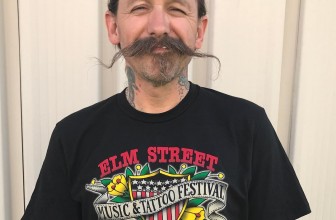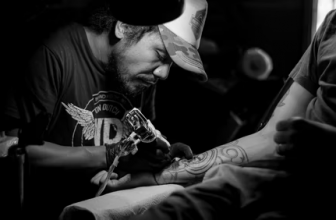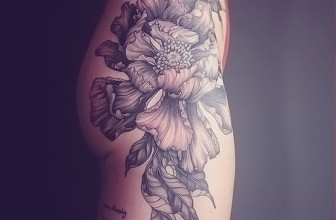How to Become a Great Tattoo Master

There are several ways to become a great tattoo master. It is an exciting profession for genuinely creative and inspiring people. Most often, a passion for tattoos begins as an unusual hobby, and only then does a person realize that he can turn his favorite hobby into a source of stable and good income.
Often, students start experimenting with tattoos during their college years. Some of them decide to abandon further studies and try their hand at their dream job. However, becoming an excellent tattoo artist is a long and challenging process, and you should not give up college before you are confident in your talent and abilities.
To combine learning and a new hobby, you can use essay writing services, for example, https://essayshark.com/our-writers/art.html. If you delegate some of your assignments to professional writers, you will free up more time for your favorite hobby without compromising your academic performance.
1 – Start with Creative Drawing
Before you ever consider designing tattoos or trying to practice tattooing, you must concentrate on improving your drawing abilities and illustrating techniques. A visually appealing drawing is the foundation of a beautiful tattoo.
Get Some Independent Practice Drawing
Doing some independent sketching is an excellent place to start. You can begin drawing whenever you like so long as you have a sketchbook and some pencils. Sketch your observations, your thoughts, and the descriptions of others. Find out if you have a genuine passion for drawing and doing art, mainly if it’s for other people. The majority of your work will consist of drawing requests; therefore, being able to adapt your artistic style to fit the needs of others is a must.
Examine the Designs of Well-Known Tattoo Artists
Researching the styles and techniques of famous tattoo artists is a terrific approach to learning the ropes of the tattooing trade. Look for well-known artists who work in various styles and see what they’ve accomplished using ink and a tattoo gun. Check the market sentiment for your desired tattoo style and see if it fits. Notable tattoo artists include Chris Nunez, Miya Bailey, Gerhard Wiesbeck, Rit Kit, Stanislaw Wilczynski, Frank Carrilho, and Mirko Sata.
2 – Get an Art Education
Embrace chances to broaden your artistic abilities if you intend to make a living as a tattoo artist. Before deciding whether to get a standard art degree, attend a master’s tattoo academy, take community college courses, or just self-teach, it’s wise to take stock of your current financial circumstances and artistic abilities.
The key is to invest more time into honing your craft; that’s the surest way to excel as an artist. This is a significant step since tattoo artists aren’t obligated to have any official education, not even a high school graduation. Consider the benefits and drawbacks of each option.
3 – Enhance Your Basic Design Skills
Some may see tattooing as a more modern art form, yet it still incorporates all the fundamental elements of design. It doesn’t matter if you learn it on your own or go to school; what matters is that you understand the interplay and effects of various design components.
Master the Fundamentals of Visual Design
It is essential to learn the fundamentals of graphic design whether you go to art school or hone your drawing abilities on the job. Theorizing size, form, color, texture, and value is essential. Along with learning the theories, you’ll have to master the art of stenciling and, eventually, the technique of applying your drawings to human skin. This will allow you to bring your vision to life on paper.
Graphic Design Fundamentals Revealed
Learning the fundamentals of graphic design—including composition, alignment, repetition, closeness, contrast, and space—is also crucial. Without adhering to these guidelines, one cannot create an adequate drawing, as they form the bedrock of art. Because their manifestations vary substantially between pieces, it is essential to have a powerful capacity to modify these principles in myriad ways.
4 – Create a Portfolio
A tattoo artist’s art portfolio is a vital tool in their toolbox. Potential instructors may glance at your finest work and see if your artistic style is a good fit for their apprentice program. The first impression you provide to prospective mentors is based on your portfolio. To free up more time for working on your portfolio, spend a little time figuring out how to choose essay writing service and delegate some of your work to professionals.
Develop a Portfolio for Your Career
Make sure your portfolio is eye-catching and seems professional. Don’t just throw all your artwork into a random manila folder or utilize a cheap binder you find. Have the pages matted instead, or invest in a new three-ring binder with sheet protectors. Your portfolio should have a professional, consistent, and appealing appearance on the exterior.
Get the Appropriate Work Done
Whether replicas or originals include 25 to 100 finished drawings and tattoo designs in your portfolio, it is essential that the works you select adequately demonstrate your artistic flexibility. If you usually produce more vibrant graphics for your work but have some black-and-white examples, be sure to include these. Your great skill and talent for tattoo design will be displayed, even if the artwork needs to translate better into ink.
5 – Earn Your License
To fulfill your state’s criteria for a tattoo license, you must receive certain certifications and/or complete relevant training courses after your apprenticeship. Additional coursework in health and safety, disease prevention, and other foundational healthcare topics may be required by your state.
Skin is the artist’s canvas. Thus, they must adhere to all health and safety regulations. A significant focus of your training will be preventing the transmission of blood-borne viruses and protecting the health of the client and the artist. Be prepared to demonstrate confirmation of blood-borne pathogen certification upon request; this certification will be mandatory at some time during or after your apprenticeship program. It will teach you how to avoid the transmission of HIV, Hepatitis C, and other illnesses when getting a tattoo.
Every state and municipality has its own unique set of licensing requirements. For instance, to get a license to tattoo in Oregon, one must do at least 50 tattoos, complete 360 hours of training with a certified tattoo artist, and then pass a written test and a skills evaluation. A license is required solely by the store in certain states. Before getting a tattoo in any state, please familiarize yourself with their licensing laws. This includes your own state. Similar to healthcare, if you fulfill each state’s regulations, you may hold a tattoo license in several states.






